Report on the Pan-European Common Bird Monitoring Scheme, May 2025
May 18, 2025
This report summarises the Pan-European Common Bird Monitoring Scheme (PECBMS) activities between 19 September 2024 and 30 April 2025.
Summary
We released the 2024 update of supra-national European species trends and indicators at the beginning of December. The update covered 44 years from 30 countries, including 26 EU MS. In the only missing EU member state, Malta, however, the fieldworkers have been counting birds since 2023, and we plan to include their data soon. We recently got in touch with the ornithologists from Iceland and we are working on the inclusion of their data into our dataset too. We updated the network with regular newsletters and web articles, and got in touch via social media. The best opportunity to catch up was definitely the 23rd EBCC conference, Bird numbers in April in Riga, Latvia. We arranged the PECBMS workshop there, which 110 participants attended. Regularly, we met EU stakeholders, researchers and coordinators and provided answers and advice upon request as well as significant technical support. We attended three conferences, a workshop and regular EBCC Board meetings, where we presented the PECBMS progress. Within the established working groups, we continued to develop two novel indicators: the Alpine Bird Index and the Urban Bird Index.
Project funding
The European Commission funds the project. We work to deliver a tender called “Service Contract for providing technical and scientific support in relation to the delivery and development of wild bird indicators for the EU (2023–2026)” together with a consortium of the following partners:
CSO (Czechia), RSPB (UK), ICO (Spain), CREAF (Centro de Investigacion Ecologica y Aplicaciones Forestales, Spain), IREC-CSIC (Instituto de Investigacion en Recursos Cinegeticos, Spain).
In addition to this contract, the PECBMS is involved in several other projects and cooperates with researchers interested in the PECBMS data. Furthermore, we receive data handling fees for data curation and preparation. This way, we aim to achieve sustainable scheme funding from various sources. However, scheme funding is still not sustainable in the long term, and we welcome every cooperation to secure it.
- EC contract: Supporting the recovery of bird species of Annex II of the Birds Directive in non-secure conservation status, delivering trends of migratory species using different flyways in Europe
Led by Consejo Superior de Investigaciones Científicas (CSIC) on behalf of the Institute for Game and Wildlife Research, IREC (CSIC-UCLM-JCCM).
January 2023 – December 2025
- Horizon 2020: Advanced biodiversity monitoring for results-based and effective agricultural policy and transformation (BioMonitor4CAP)
A consortium of entomologists, soil scientists, agronomists, and data scientists, including CSO, BTO, and Bulgarian BirdLife.
Dec 2022–Dec 2026
Production of European species trends and European and EU indicators
On 11 December 2024, we published trends and indices of 170 common European bird species based on data from 30 countries. The indices were published for the period 1980–2023, accompanied by the long-term (1980–2023) and short-term trends (covering last ten years 2014–2023).
Next to that, PECBMS indicators based on data from 30 countries (1980–2023) were published too. In the 2024 update, we introduced the new names of the PECBMS indicators for the first time. The updated indicators´ names align with official CBD (Convention on Biological Diversity) terms used by BirdLife, the European Commission, and national and international policies. We also use the term ‘indicator’, but this applies to all the indicators we present in general.
Wild Bird Indices (so far, Common bird indicators)
All Bird Index (so far, All common birds)
Farmland Bird Index (so far, Common farmland birds)
Forest Bird Index (so far, Common forest birds)
All the news from the 2024 update as well as the PECBMS methods are summarized at the PECBMS website. The PECBMS supranational outputs (European species indices and trends and indicators) freely available to download at the PECBMS website.
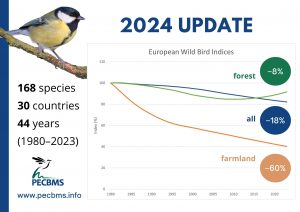
Fig. 1 European Wild Bird Indices (indicators) (1980–2023). All Bird Index (168 species), shown in the blue line, declined by 18%; Forest Bird Index (34 species), shown in the green line, declined by 8%; and Farmland Bird Index (39 species), shown in the red line, decreased by an alarming 60% from 1980.
Technical improvements
Most national coordinators calculate national indices using an updated version of a tool called RTRIM-shell (developed in Statistics Netherlands). The tool uses the RTRIM package in R to produce the same outputs as previous indicator updates. We are continuously working on its update. In March 2025 national coordinators worked with the latest version, RTRIM-shell 2.2. This version was developed by Javier Rivas Salvador, PECBMS R-specialist, in cooperation with national coordinators. The main advantage is that we merged all the previous scripts into one script which – in one run –enables to prepare the input data, runs RTRIM calculation and prepares the results for upload in the PECBMS on-line tool. The modifications do not influence the users’ part anymore, so national coordinators may work with RTRIM-shell in a way they are used to. The latest RTRIM-shell is always published via PECBMS Slack forum. If anyone can´t reach the RTRIM-shell via Slack, please contact PECBMS coordinator, Eva Šilarová (silarova@birdlife.cz).
National data (both national indices and site-level data) are regularly delivered via PECBMS on-line tool.
We added a couple of functions to the site-level data section of the tool in Autumn 2024: Records of species outside the breeding range can be exported to facilitate the breeding validation process and data on monitoring effort can be uploaded at site level to cope with these differences within some of the monitoring schemes.
Presentation of results and promotion
We informed the national coordinators and the wider audience, comprising over 700 contacts, on the progress of the PECBMS via reports in the quarterly electronic EBCC Newsletter (Winter 2024 and Spring 2025 issues). All issues are available online on the pecbms.info website.
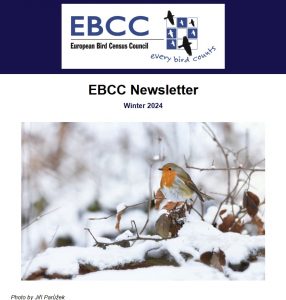
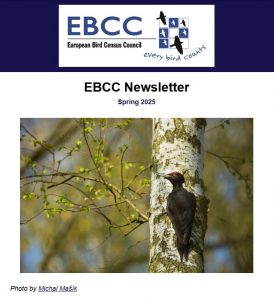
Fig. 2 Title pages of the EBCC newsletters
The PECBMS website, www.pecbms.info, has been updated regularly. In the given period, we published 9 news articles and updated the list of publications, PECBMS methods, and information on the European bird monitoring schemes.
To address the wider public, we maintained the Facebook profile and updated the posts regularly, as well as 15 news items directly regarding the PECBMS.

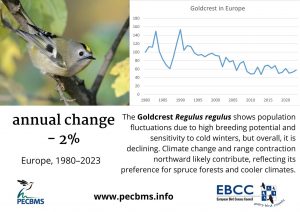
Fig. 3 Infographics used to promote the PECBMS outputs via website and social media
A Novel Alpine Bird Index development
We started developing a novel Alpine Bird Index based on the PECBMS site-level data. So far, national mountain bird indicators have been produced in the UK (Upland bird index), Sweden, Finland (Alpine bird index), Norway and Italy (Mountain grassland index). We established a working group comprising the PECBMS core team, Arco van Strien and Aleksi Lehikoinen, who met in October 2023 and February 2024. We plan to build the Alpine bird indicator on the publication by Lehikoinen et al. 2019 (Global Change Biology) Declining population trends of European mountain birds (pecbms.info) and produce the indicator once every three years, depending on the site-level database updates. We will invite other colleagues to the working group and plan to keep working on the indicator development in 2025.
Research
The PECBMS data has been used in several studies. Site-level data on 50 farmland birds have been involved in the EBBA2 Live project, which attempts to update EBBA2 maps of farmland birds (period 2013–2017) with maps based on PECBMS data (2018–2023) and a manuscript has been prepared and shared with national coordinators. We delivered site-level data to four new research projects focusing on climate change, crop diversity and land cover change effects on bird population trends and diversity.
The PECBMS team represented EBCC at three conferences and one workshop. On 12 December, Lega Italiana Protezione Uccelli (LIPU) organised an Italian Farmland Bird Index Conference at the LIPU National Headquarters in Parma, Italy. Alena Klvaňová gave an online presentation called Developing and using the farmland bird indicators – from the local to the European level. She joined the following discussion to exchange ideas and insights regarding the identification of key strengths to emphasise and aspects for improvement, as well as the urgent need to implement biodiversity monitoring.
The International Conference of Palearctic Steppe Birds occurred on March 25–29, 2025, at the University of Castilla-La Mancha, Ciudad Real, Spain. Alena Klvaňová was invited to present a plenary on Using PECBMS and EBBA2 data on steppe birds in European policy and research. The main aim of the presentation was to introduce how citizen science data on European bird populations, including the steppe species, have been gathered, analysed, and used in research and policy on a supra-national European level.
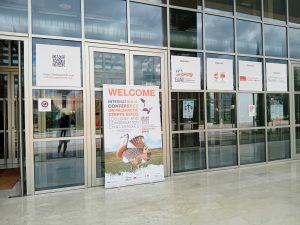
Fig. 4 The venue of the International Conference of Palearctic Steppe Birds in Ciudad Real, Spain
The 23rd conference of the European Bird Census Council (EBCC), called Bird Numbers 2025: Synergies in monitoring for conservation, took place from 31 March to 4 April 2025 in Riga, Latvia. The PECBMS team organised a 3-hour workshop on Monday, 31 March, attended by 110 participants. We reported on the PECBMS news and achievements since the last workshop in 2022, and Sergi Herrando provided an overview of the EBBA Live Farmland project. Four national coordinators gave talks about their monitoring schemes. The last part of the workshop was dedicated to the novel Urban Bird Index. Anna Gamero introduced the work done so far to develop the EU-level UBI, and we discussed the different urban indicators produced across Europe in Germany, Switzerland, Poland, Spain, the Netherlands and France. On Monday, 1 April, Anna Gamero gave a talk called European Alpine bird indicator, introducing the development of another novel bird index within the PECBMS.
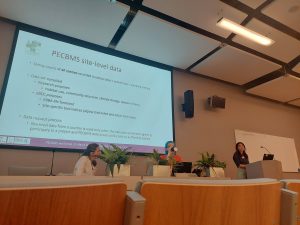
Fig. 5 Anna Gamero is giving a talk about the site-level database during the PECBMS workshop on 31 March in Riga
In February, we updated the continent-wide population size changes “Long-term and large-scale multispecies dataset tracking population changes of common European breeding birds” in the Zenodo repository, supplementing the data paper published in 2020.
Research papers based on the PECBMS data
Karolina Zalewska, James J. Gilroy, Inês Catry, Philip W. Atkinson, Alena Klvaňová, Aldina M. A. Franco 2025: European breeding bird declines associated with narrower climatic niches. Journal of Biogeography. Early view: https://doi.org/10.1111/jbi.15127.
Enya O’Reilly, Richard D. Gregory, Marc Anton, Lluís Brotons, Virginia Escandell, Anna Gamero, Sergi Herrando, Frédéric Jiguet, Johannes Kamp, Alena Klvaňová, Primož Kmecl, Ingar J. Øien, Jean-Yves Paquet, Jiří Reif, Eva Šilarová, Bård G. Stokke, Nicolas Strebel, Norbert Teufelbauer, Sven Trautmann, Thomas Vikstrøm, Petr Voříšek, Simon J. Butler: Developing spatially comparable biodiversity indicators using objective scale-dependent species selection. Ecological Indicators, Volume 172, 113327, ISSN 1470-160X. https://doi.org/10.1016/j.ecolind.2025.113327
Carles Carboneras, Eva Šilarová, Jana Škorpilová, Beatriz Arroyo 2024: Rapid population response to a hunting ban in a previously overharvested, threatened landbird. Conservation letters, Volume 17, Issue 6. https://doi.org/10.1111/conl.13057
Maintain and update the network of cooperating organisations and individuals.
We provided advice and consultations to the national coordinators upon request.
- Austria: Help with transformation from BirdStats to RTRIM-shell use for index calculation.
- Croatia: We discussed the newly established schemes dedicated to forest birds, which will produce national forest bird indicators. We also met with the government and BIOM (Croatian BirdLife Partner) to discuss the methodology and production of the new indicator.
- Cyprus: We discussed the use of the RTRIM shell.
- Finland: Discussion of combination of the schemes.
- Iceland: Start of cooperation on future data of some species delivery to PECBMS
- Lithuania: Help with transformation from BirdStats to RTRIM-shell use for index calculation.
- Slovakia: We discussed the details of the country’s recently established monitoring scheme.
- Spain: Discussion on the calculation of national indices and combination of schemes.
Active communication with the scheme stakeholders
- EBCC office meetings (monthly)
- PECBMS department meetings (monthly)
- Meeting with the PECBMS Steering and Technical Group (once a year)
- Technical meetings within the team (once a year), incl. experts
- Regular meetings and e-mail communication with DG ENV on the EU nature restoration law
- Regular meetings with DG ENV
- Inception meeting with the new contract Steering Group (DG ENV, DG Agri, JRC, EEA)
- Eurostat
- Communication with the EC officers regarding the new Nature Restoration Law and informing them about the outputs of the survey among the national coordinators on the production of national bird indicators
Reporting to the EBCC Board
We regularly attended EBCC Board meetings online on 19 February and in person on 30 April, where we presented the PECBMS progress and main outputs for the given periods.
